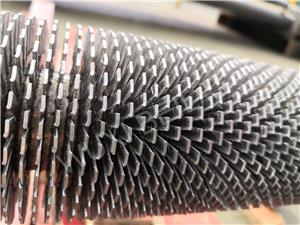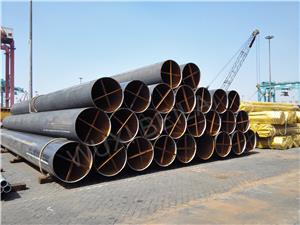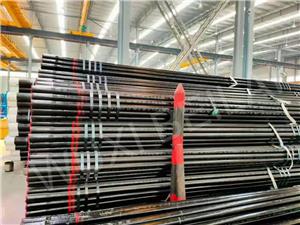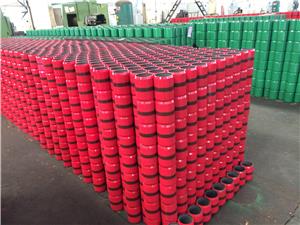Protecting Your Infrastructure: Effective Low Temperature Pipe Freeze Protection by BEILAI
As a trusted supplier, BEILAI presents practical guidance and engineering best practices for low temperature pipe systems and low temperature pipe freeze protection that ensure uptime, safety, and energy efficiency.
Why Low Temperature Pipe Freeze Protection Matters
Operators and designers must prioritize low temperature pipe freeze protection because freezing can cause catastrophic rupture, service interruption, and expensive repairs. A robust low temperature pipe freeze protection strategy reduces downtime, avoids product loss, and extends the service life of piping systems operating in sub-zero conditions.
Common Risks for Low Temperature Pipe Systems
Static fluid freeze and expansion that damages the low temperature pipe.
Loss of thermal equilibrium leading to local cold spots that defeat low temperature pipe freeze protection.
Condensation and ice formation on exposed surfaces compromising insulation and corrosion protection.
Operational errors (e.g., stagnant sections) that increase freeze risk for low temperature pipe installations.
Key Components of an Effective Low Temperature Pipe Freeze Protection Strategy
A modern low temperature pipe freeze protection program integrates design, materials, and active controls. BEILAI recommends a layered approach:
1. Material Selection
Choose appropriate metallurgy for the low temperature pipe. Materials must preserve toughness at low temperatures; carbon steels, certain stainless grades, and nickel alloys are common choices depending on operating ranges. Proper material choice is the first line of defense for low temperature pipe freeze protection.
2. Passive Insulation
High-performance insulation reduces heat loss from the fluid within the low temperature pipe. BEILAI recommends closed-cell foams, mineral wool with suitable vapor barriers, or engineered composite insulations tailored to the low temperature pipe operating profile. Insulation must be continuous and sealed around flanges and joints to maintain reliable low temperature pipe freeze protection.
3. Active Heating Systems
Electric trace heating, steam tracing, or glycol circulation are active methods to keep a low temperature pipe above critical temperatures. Properly designed electric trace heating with temperature controllers and redundancy forms a strong element of low temperature pipe freeze protection.
4. Monitoring and Controls
Real-time monitoring of pipe temperatures and flow ensures low temperature pipe freeze protection is functioning. Alarms, automatic shutoffs, and remote telemetry reduce the time-to-detect and time-to-respond for low temperature incidents on any low temperature pipe network.
5. Mechanical Design Considerations
Design the routing and slope to avoid low spots where fluids can stagnate and freeze. Where feasible, include drain points and pigging ports. Mechanical design that reduces standing volumes improves the effectiveness of low temperature pipe freeze protection.
Practical Installation Tips from BEILAI
Map vulnerable low temperature pipe sections during design and prioritize those for insulation and tracing.
Use multi-layer insulation systems on long low temperature pipe runs to balance thermal resistance and vapor control.
Install continuous temperature sensors with automated control for all critical low temperature pipe branches to enable proactive low temperature pipe freeze protection.
Protect joints and valves with specialized heating blankets designed for low temperature pipe geometries.
Plan for winter commissioning: test the low temperature pipe freeze protection systems under simulated low ambient conditions before put-in-service.
Maintenance and Long-Term Reliability
A robust maintenance program preserves low temperature pipe freeze protection performance. BEILAI advises scheduled inspections for insulation integrity, trace heater continuity tests, control calibration, and corrosion checks on the low temperature pipe exterior. Periodic audits of freeze protection setpoints ensure systems remain effective as environmental conditions and operating profiles change.
Energy Efficiency and Cost Considerations
While active heating delivers certainty for low temperature pipe freeze protection, it consumes energy. Optimize by combining best-in-class insulation with intelligent controls and zoned heating strategies for low temperature pipe runs. BEILAI helps clients model lifecycle cost trade-offs between additional insulation thickness and ongoing trace heating energy use to find the lowest total cost of ownership while maintaining reliable low temperature pipe freeze protection.
Case Study: Typical BEILAI Solution for Cold Region Pipelines
In a recent cold-climate project, BEILAI specified a complete low temperature pipe freeze protection package: cryogenic-grade piping, multilayer insulation with a sealed vapor barrier, redundant electric trace heating with automatic controllers, and centralized monitoring. The solution reduced freeze incidents to near zero and extended maintenance intervals for the low temperature pipe system.
Regulatory Compliance and Safety
All low temperature pipe freeze protection measures should comply with local codes and industry standards. BEILAI assists customers to ensure documentation, risk assessments, and safety procedures align with regulatory expectations for low temperature pipe installations.




